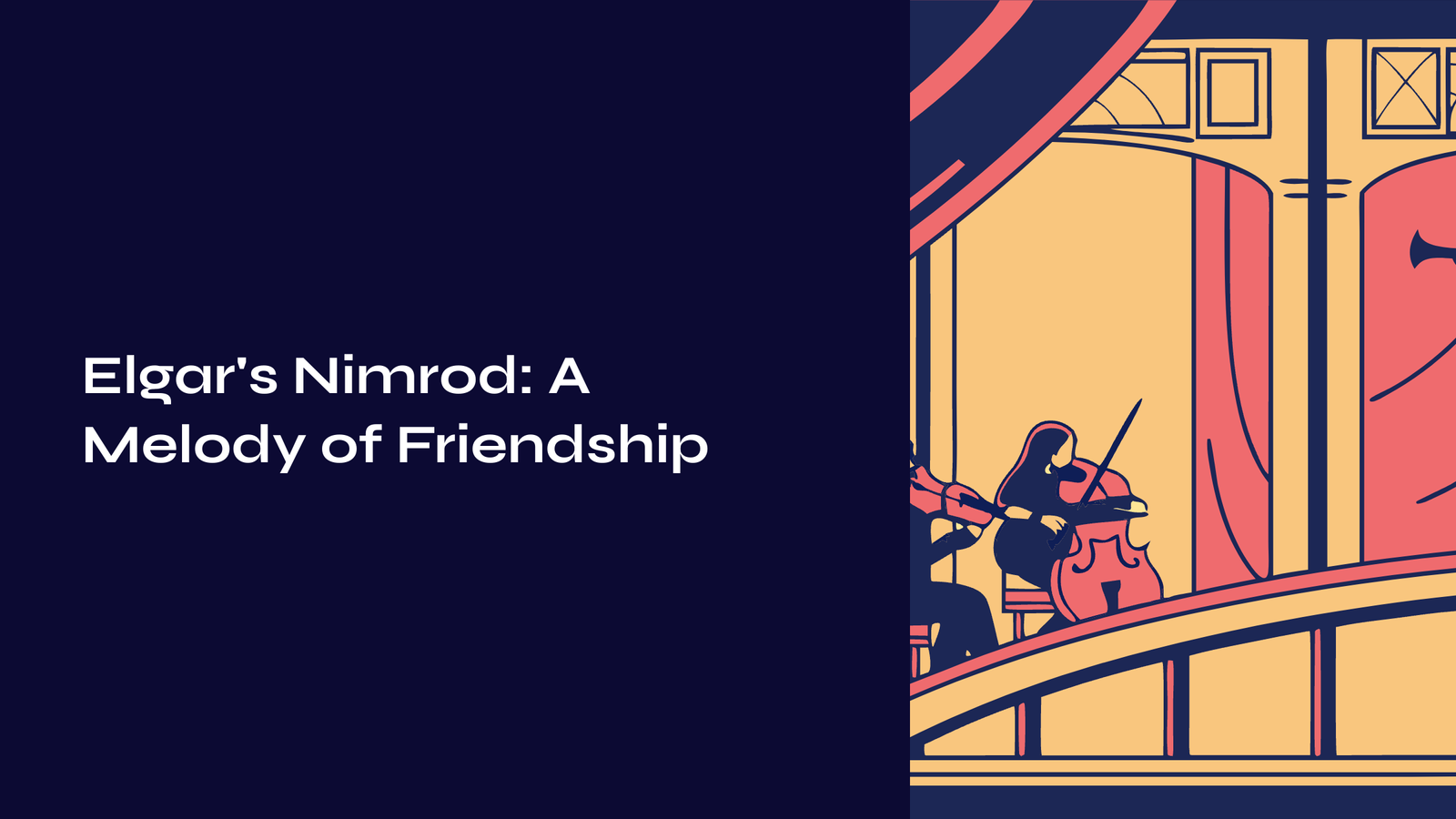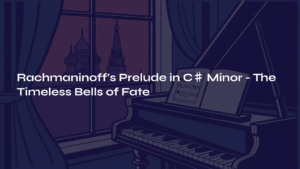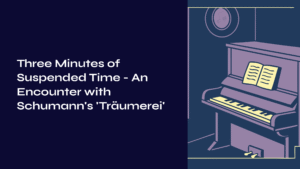Table of Contents
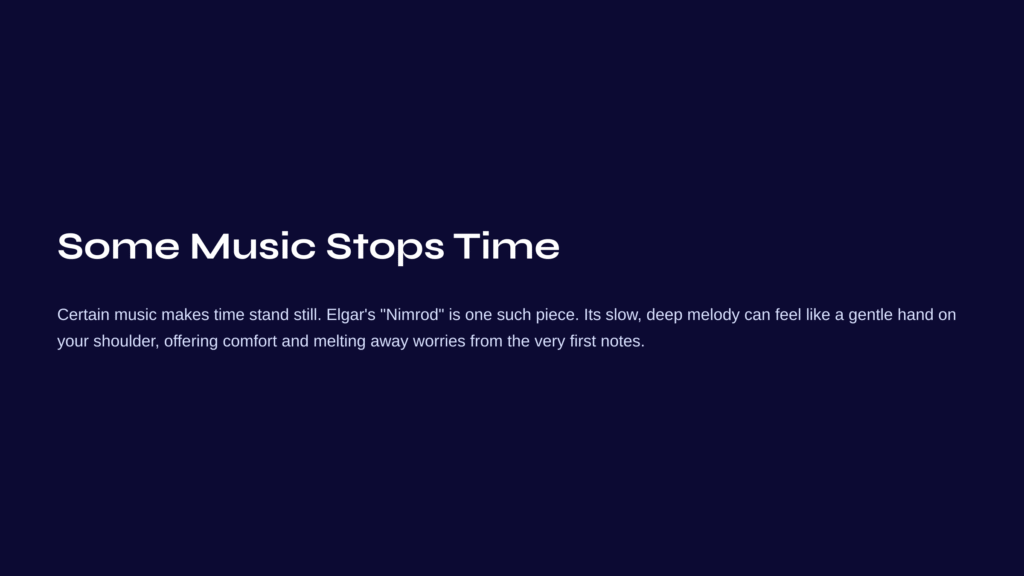
Some Music Stops Time
Sometimes, certain music makes time seem to stand still. The moment those first few measures flow out, it feels as though someone has quietly placed a hand on your shoulder and whispered, “It’s going to be alright.” Elgar’s “Nimrod” is exactly that kind of piece.
I still remember vividly the first time I heard this work. As the low, deep melody of the strings began to unfold slowly, something heavy that had been sitting in a corner of my heart started to melt away gently. In that moment, I knew this music contained something beyond simple beauty.
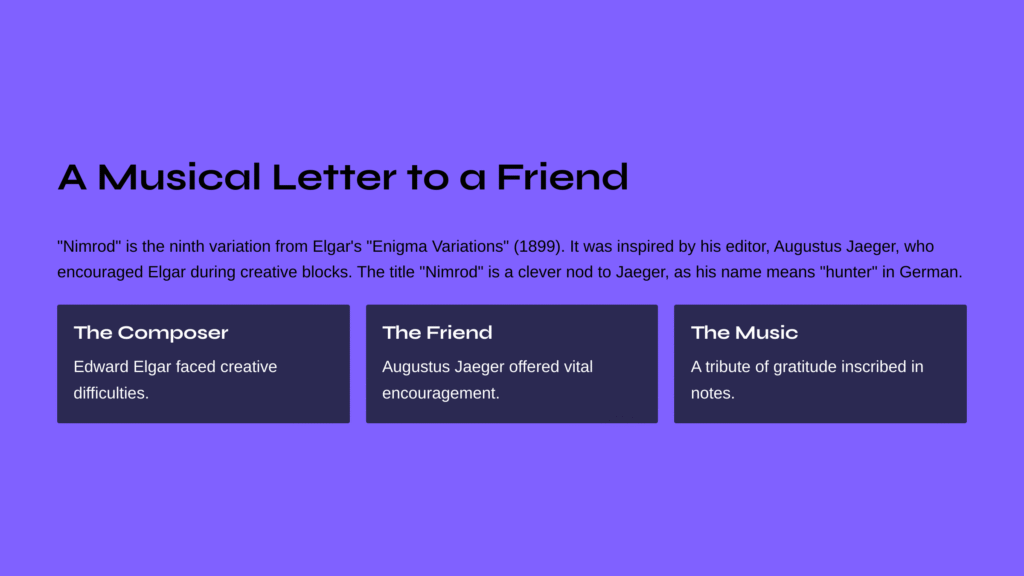
A Musical Letter to an Editor
“Nimrod,” the ninth variation from Edward Elgar’s “Enigma Variations” completed in 1899, has a story of warm friendship behind its creation. The piece was inspired by Augustus Jaeger, Elgar’s editor and publisher.
Jaeger, a German-born man, never hesitated to encourage Elgar whenever the composer faced difficulties in his work. Particularly when Elgar hit creative blocks, Jaeger would comfort him by citing Beethoven’s piano sonatas, saying that “great composers also start with simple melodies and create remarkable works from them.”
The title “Nimrod” comes from the name of a great hunter in the Bible, but it also connects to Jaeger’s name through wordplay—”Jaeger” means “hunter” in German. Through this piece, Elgar inscribed his gratitude and respect for his friend in musical notes.
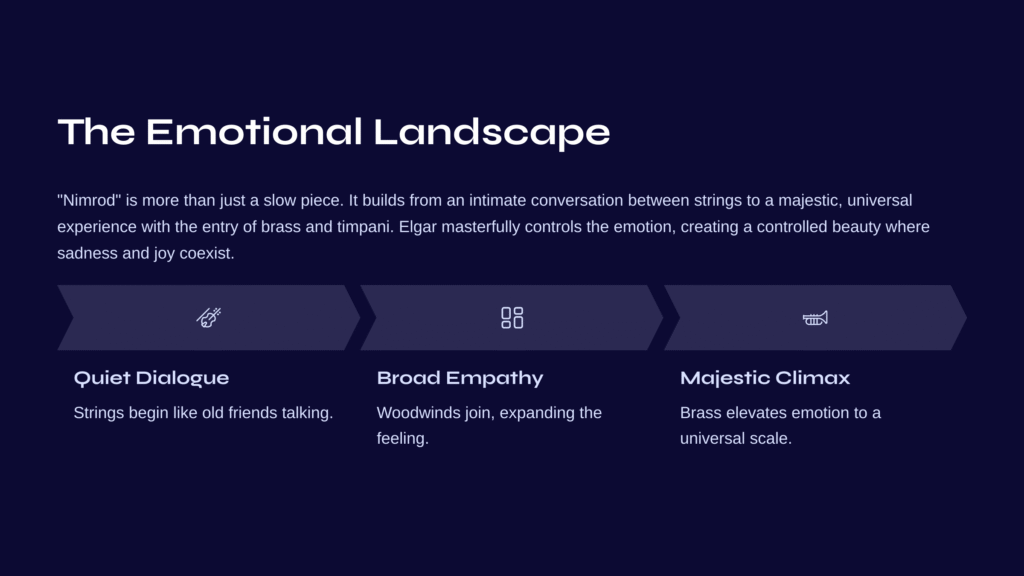
The Emotional Landscape Music Paints
“Nimrod” is a slow piece in Andante tempo. But the word “slow” alone cannot capture the true charm of this composition.
The piece begins with a quiet conversation among the strings. Violins, violas, and cellos exchange melodies like old friends listening carefully to each other’s voices. The atmosphere at this moment resembles a deep conversation shared over a warm cup of tea late at night.
Gradually, woodwind instruments join one by one. The lyrical melody of the oboe gently settles over the strings, followed by the clarinet. In this moment, the music expands from personal dialogue to broader empathy.
When the brass instruments enter, the music transforms into an entirely different dimension. The majestic harmonies created by horns, trumpets, and trombones feel like personal emotions being elevated to universal human experience. As the timpani roll is added, the piece reaches an overwhelming climax.
Yet even this climactic moment is never exaggerated. Elgar transforms the explosion of emotion into controlled beauty. Like the expression of someone smiling while holding back tears, he expresses the complex and subtle emotions where sadness and joy coexist.
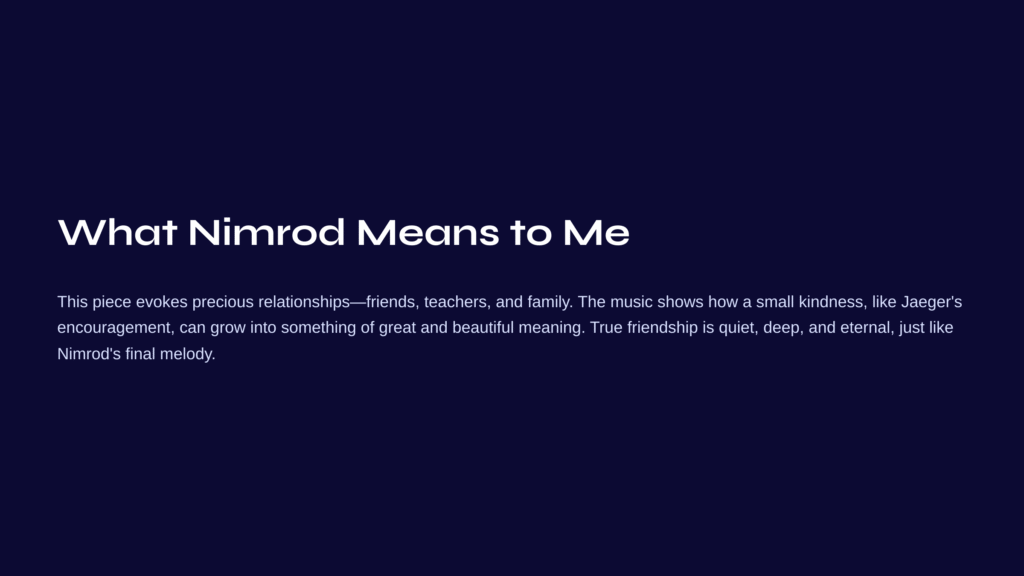
What Nimrod Means to Me
Every time I listen to this piece, I think of the precious people I’ve encountered in life. Friends who stayed by my side during difficult times, teachers who encouraged me when I wanted to give up, family members who supported me unconditionally. Nimrod reminds me musically of the preciousness of such relationships.
Particularly in the middle section, where brass instruments join and the music gradually grows larger, I always feel a thrill. It seems to show how one person’s small kindness can grow into such great meaning over time. Just as Jaeger’s few words of encouragement to Elgar eventually gave birth to this eternally memorable beautiful music.
And when the piece quietly concludes, I always think the same thing: true friendship is not flashy. Like Nimrod’s final melody, it is quiet yet deep, simple yet eternal.
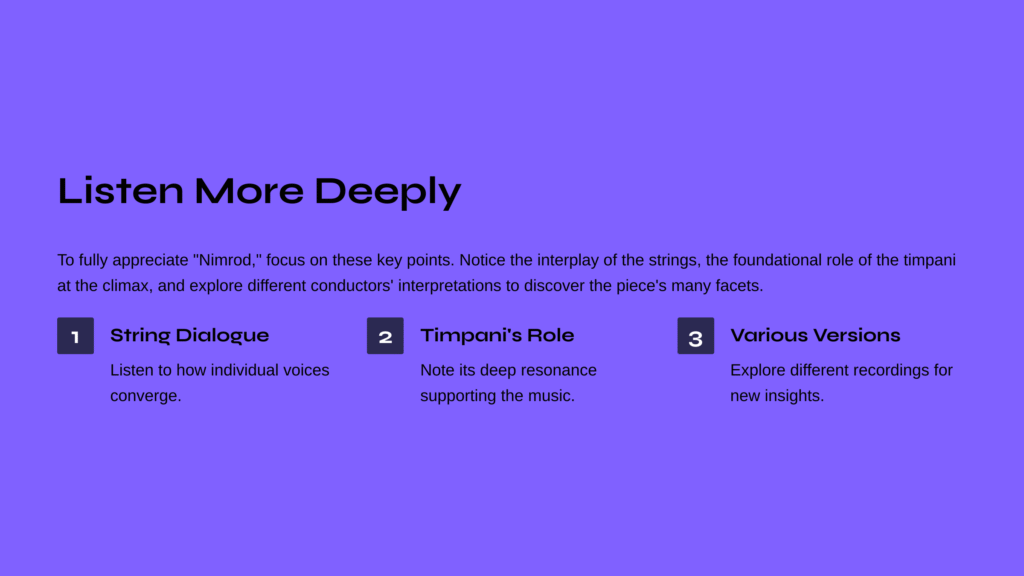
Small Secrets for Listening to Nimrod More Deeply
To properly appreciate this piece, I recommend focusing on several key points.
First, listen carefully to the dialogue the strings exchange at the beginning. Each voice part speaks with a different voice, but the process of eventually converging into one grand melody is truly beautiful. This is precisely Elgar’s unique characteristic of combining chamber music sensibility with orchestral grandeur.
Second, in the climactic section where brass instruments appear, pay attention to the timpani’s role. The deep resonance created by the timpani goes beyond a simple rhythm instrument, playing a role that supports the entire music like the vibration of the earth itself.
Finally, it’s worthwhile to listen to various versions. From historical recordings conducted by Barbirolli or Elgar himself to interpretations by modern young conductors, discovering the different facets of Nimrod that each reveals is particularly delightful.
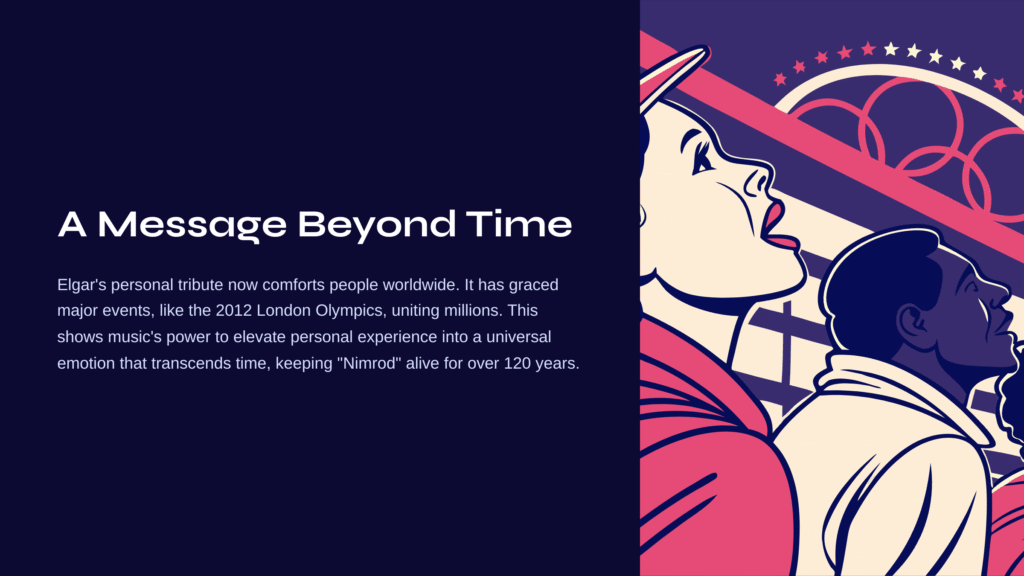
A Message from Beyond Time That Music Left Behind
This small variation that Elgar wrote for his friend has now become music that comforts people’s hearts worldwide. It has accompanied not only British national events but also individuals’ most precious moments.
Do you remember the melody of Nimrod that echoed at the 2012 London Olympics opening ceremony? In that moment, hundreds of millions of people around the world shared the same emotion. Could he have known that a musical letter one composer sent to one friend would touch the hearts of so many people across time and space?
The power of music lies precisely here. When personal experience is elevated to universal emotion, that music transcends time. This is why Nimrod continues to live and breathe beside us even after more than 120 years.
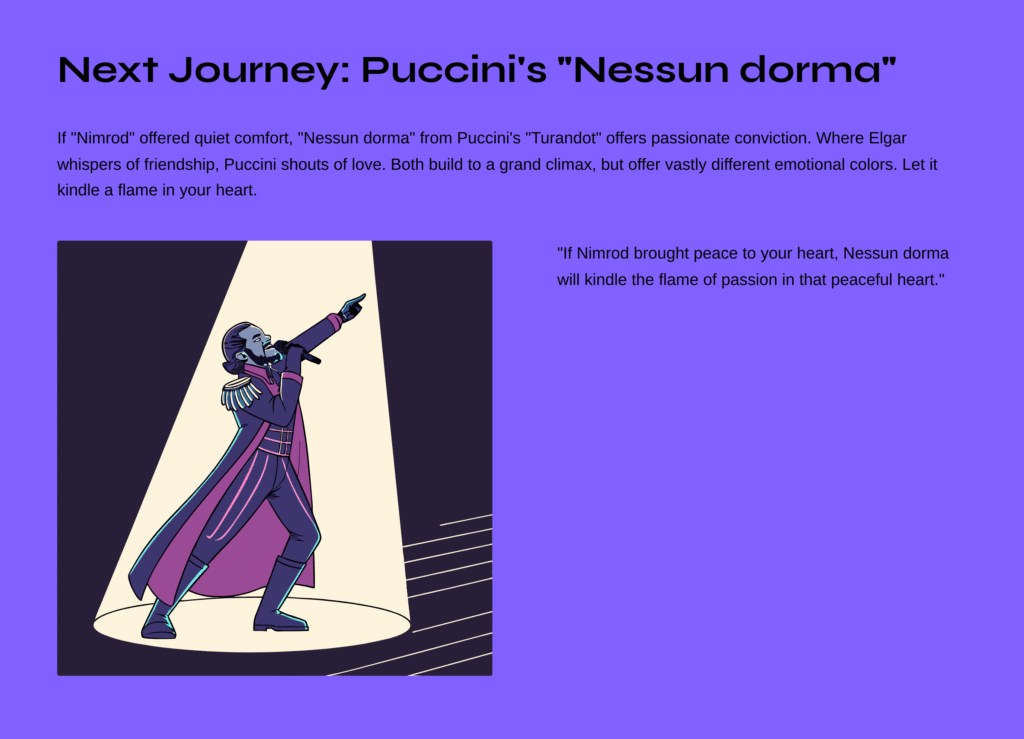
Next Journey: Puccini’s “Nessun dorma”
If you’ve become familiar with Nimrod’s quiet comfort, now it’s time to encounter a completely different kind of emotion. I recommend “Nessun dorma” sung by Prince Calaf in Puccini’s opera “Turandot.”
If Elgar’s Nimrod quietly whispers the warmth of friendship, Nessun dorma shouts conviction about love toward the entire universe. This aria, sung by a man staking his destiny in the Beijing palace where no one can sleep at midnight, shows how intense human willpower can be.
While Nimrod begins with gentle dialogue among strings, Nessun dorma starts with a tenor solo and gradually builds as the entire orchestra joins toward a magnificent finale. Both pieces share a structure that moves from quiet beginnings to grand climaxes, but their emotional colors are completely different.
If Nimrod brought peace to your heart, Nessun dorma will kindle the flame of passion in that peaceful heart. I recommend exploring from Pavarotti’s legendary version to various interpretations by contemporary tenors.
The next time you listen to this piece, I hope you too will take a brief journey into the friendship between Elgar and Jaeger, and into your own precious relationships. As you listen to the story the music tells, you’ll find that warm comfort has quietly settled in a corner of your heart.
